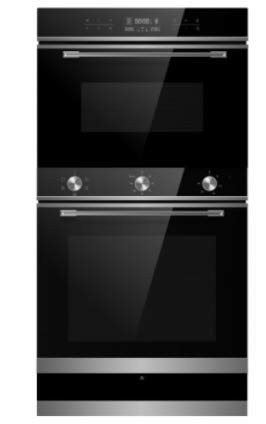Understanding Electric Ovens and Hobs: Your Guide to Cooking Efficiency
Electric ovens and hobs have actually transformed the culinary landscape, using home cooks and expert chefs a reliable, efficient, and consistent method to prepare meals. As Oven And Hob continue to influence home appliance design, the efficiency and performance of electric cooking systems have considerably improved. This article looks into the features, advantages, and factors to consider surrounding electric ovens and hobs, supplying a comprehensive overview for anybody looking to upgrade or invest in kitchen home appliances.
What Are Electric Ovens and Hobs?
Electric ovens are kitchen devices developed for baking, broiling, roasting, and other cooking techniques that need regulated heat. Ovens And Hobs use electric coils or convected heat aspects to generate and maintain the preferred temperature. Electric hobs, typically described as electric cooktops, are flat surface areas with heating aspects that enable pots and pans to be positioned straight on them for cooking.
Table 1: Key Differences Between Electric Ovens and Hobs
| Feature | Electric Oven | Electric Hob |
|---|---|---|
| Primary Function | Baking, roasting, broiling | Heating pots and pans for cooking |
| Heating Method | Electric coils or glowing elements | Induction, radiant, or ceramic components |
| Operation Temperature Range | Approximately 500 ° F (260 ° C | ) Varies by design; generally lower than ovens |
| Cooking Styles | Versatile; appropriate for various meals | Mainly stovetop cooking approaches |
| Area Requirement | Usually built into cabinets | Typically standalone or integrated alternatives |
| Energy Consumption | Generally greater, depending upon usage | More energy-efficient with induction hobs |
Benefits of Electric Ovens and Hobs
When considering electric ovens and hobs, it's necessary to understand their various advantages, which can improve the cooking experience.
1. Consistent Heating
Electric ovens and hobs offer even and constant heating, which is essential for many cooking techniques. This ensures that dishes cook uniformly, reducing the chances of overcooking or undercooking specific areas of food.
2. Safety Features
Modern electric ovens and hobs come geared up with various security functions to avoid mishaps in the kitchen. For instance, numerous models consist of automatic shut-off functions, hot surface area signs, and child safety locks.
3. Easy to Use
Unlike gas models, electric ovens and hobs are straightforward and easy to use. The simpleness of switching on a dial or pushing a button makes them accessible for cooks of all ability levels.
4. Versatile Cooking Options
With various cooking approaches possible, from baking to simmering, electric models are flexible enough to accommodate a wide variety of cooking designs and preferences.
5. Cleaning and Maintenance
Electric ovens typically include smooth surfaces that are easy to tidy, especially designs with self-cleaning capabilities. Hobs, especially induction types, also provide a flat surface that is simple to clean down, making upkeep a breeze.
Popular Types of Electric Ovens:
- Conventional Ovens: Ideal for conventional baking and roasting.
- Convection Ovens: Circulate hot air for quicker, even cooking.
- Microwave Ovens: Use electromagnetic radiation for quick heating and cooking.
- Toaster: Small counter top ovens for quick jobs.
Popular Types of Electric Hobs:
- Induction Hobs: Utilize electromagnetic fields for quick heating and energy effectiveness.
- Radiant Hobs: Feature electric coils that warm up to prepare food.
- Ceramic Hobs: Offer a smooth surface area and are simple to tidy.
Considerations When Choosing Electric Ovens and Hobs
While electric ovens and hobs use many benefits, numerous factors ought to be considered to ensure the right suitable for your kitchen:
1. Area Availability
Examine the offered kitchen space before purchasing. Determine whether you need a built-in model or a freestanding appliance, and determine the measurements thoroughly to guarantee a good fit.
2. Cooking Needs
Determine your cooking practices and choices. If you frequently bake large quantities or cook complex meals, think about an oven with advanced features like convection settings or multiple racks.
3. Energy Efficiency
Look for energy-efficient models that can help conserve on utility costs over time. Energy Star-rated home appliances can be especially cost-effective.
4. Budget
Set a practical budget plan that accounts for both the preliminary purchase and continuous operating costs. In addition to the home appliance expense, consider setup and possible repairs.
5. Extra Features
Consider whether features like clever innovation, programmable settings, or steam cooking alternatives are important for your cooking style.
FAQ Section
Q: How do I clean my electric oven?
A: Most electric ovens come with self-cleaning choices. If your model does not have this function, enable the oven to cool, then clean down surfaces with a mix of baking soda and water or a commercial oven cleaner.
Q: Is induction cooking safe?
A: Yes, induction cooking is thought about safe as the heating component only triggers when compatible pots and pans touches with it, minimizing the risk of burns.
Q: How long does it consider an electric oven to pre-heat?
A: Preheating times vary based upon the oven's model and temperature setting but generally range from 10 to 15 minutes.
Q: Can I utilize any pots and pans on an induction hob?
A: No, only ferromagnetic cookware works with induction hobs. Look for induction compatibility before use to prevent damage.
Q: What is the distinction in between a stove and a conventional electric oven?
A: A stove includes a fan that circulates hot air, ensuring even cooking and reduced cooking times compared to a standard electric oven, which does not have this feature.
Electric ovens and hobs provide a contemporary service to various cooking requirements, providing effectiveness and reliability in the kitchen. As customers assess their choices, understanding the features, types, and considerations will allow them to make educated decisions. Whether one is an occasional cook or a cooking lover, electric appliances can boost the total cooking experience, bringing convenience and creativity to the table.

